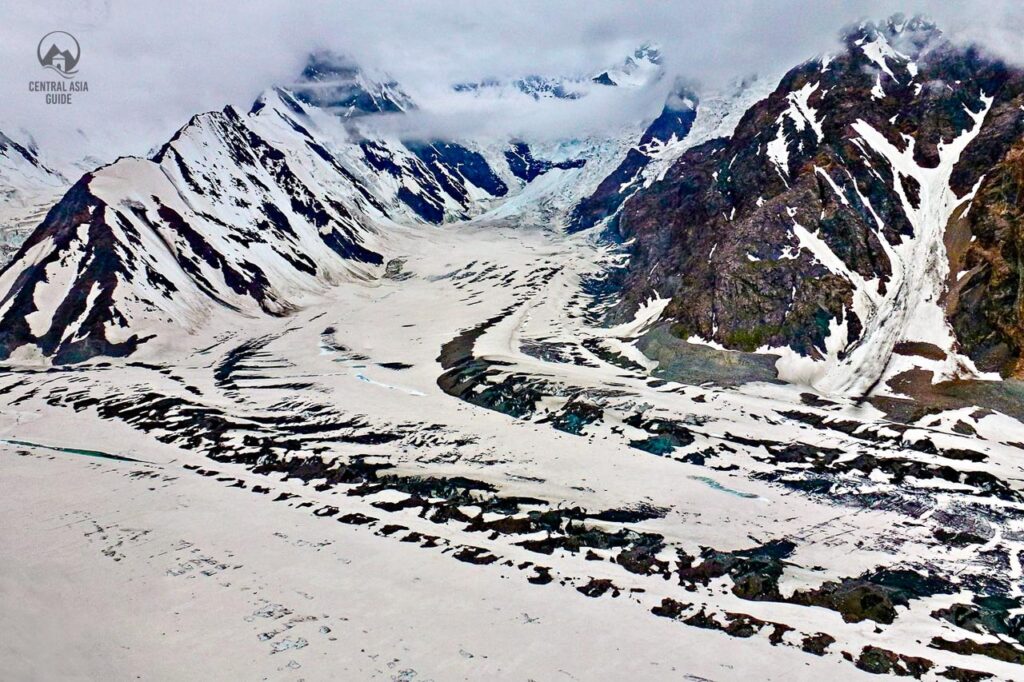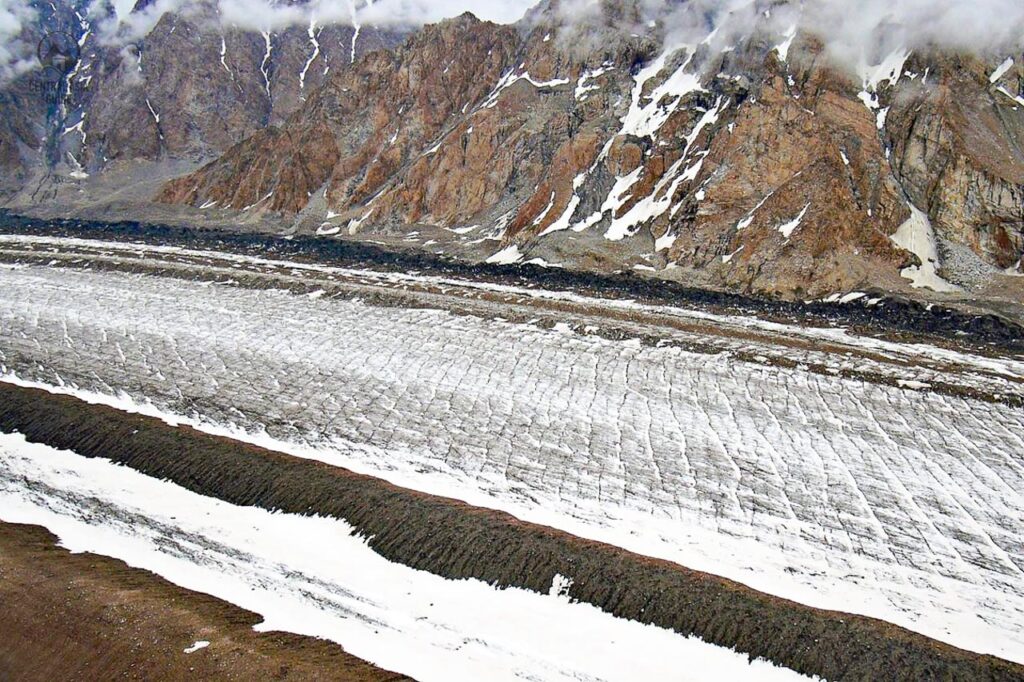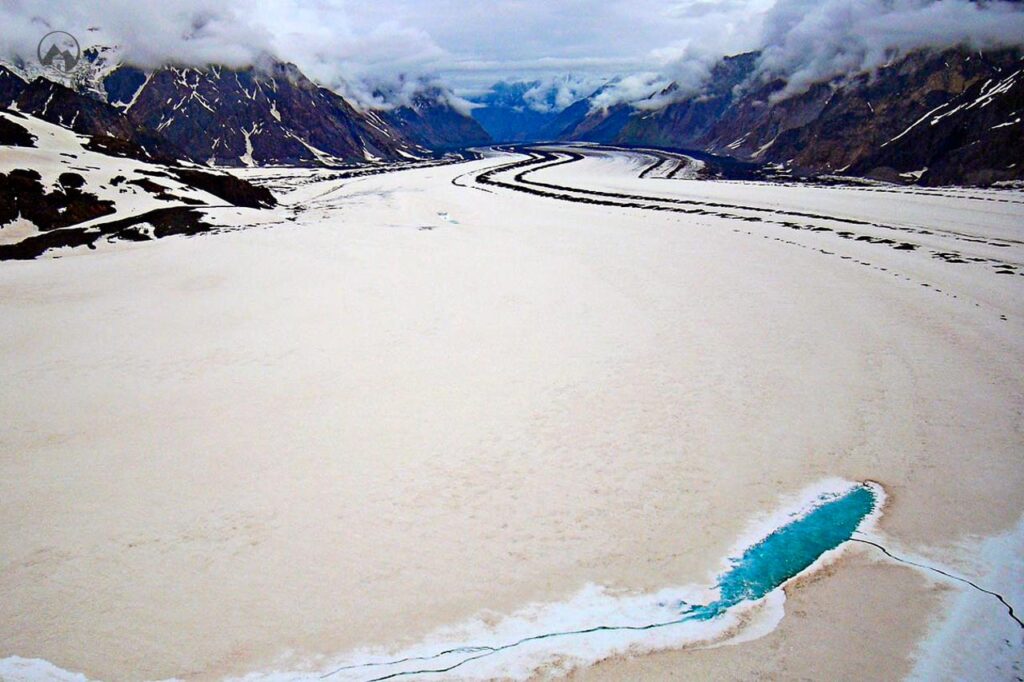Vanch-Yakh (Fedchenko) Glacier
Vanch-Yakh Glacier (Fedchenko)
The Vanch-Yakh Glacier (Russian: Ледник Федченко; Tajik: Ванджях), is a remarkable glacier located in the Yazgulem Range within the Pamir Mountains. The Vanch-Yakh Glacier stretches for an impressive 77 kilometers and covers an area of about 650 square kilometers. Notably, it holds the distinction of being the longest glacier in the world outside of the polar regions. The glacier is still more widely known as Fedchenko Glacier but it was officially renamed in 2023 as as part of the Tajik de-russification program.


The maximum thickness of the Fedchenko glacier is about 1000 meters and the combined volume of it and its numerous tributaries is estimated to be around 144 cubic kilometers (35 cubic miles). Its icy waters eventually flow down through various rivers, including the Muksu, Surkhob, Vakhsh, and Amu Darya, ultimately reaching the Aral Sea. Fedchenko Glacier is also the main source of water in Tajikistan. The drainage basin of the glacier covers 1537 km2.
The glacier follows a generally northward path to the east of the towering 6 595 meter (21,637-foot) Garmo Peak and originates at an elevation of 6 200 meters (20,300 feet) above sea level and eventually melts, feeding into the Balandkiik River near the border with Kyrgyzstan at an elevation of 2 909 meters (9,544 feet). To the west from the glacier lie the Academy of Sciences Range, Mount Garmo, Ismoil Somoni Peak, and the headwaters of the Vanj River and Yazgulyam Rivers. Independence Peak lies to the south, while Gorbunov Peak (6,025 meters) stands to the east. To the north, you’ll find Altyn Mazar.
Discovery and Exploration of Fedchenko glacier
The Vanch-Yakh glacier was discovered to Western science in 1878 and is named after Alexei Pavlovich Fedchenko, a Russian explorer (although he wasn’t the original discoverer). Entomologist, and traveller Vasily Fedorovich Oshanin (1844-1917), who headed expedition named the ‘Imperial Association of Friends of the Natural Sciences’. This expedition included topographer G.E. Rodionov and the botanist M.J. Nevsky and Alexei Pavlovich Fedchenko (1844-1873).
It wasn’t fully explored until 1928, when a German-Soviet expedition led by Willi Rickmer Rickmers conducted a thorough study. Over the years, the glacier has experienced changes, including expansion and recession. For instance, between 1910 and 1913, it advanced significantly, blocking the Balyandlik River but has later receded and affected its inflows from various tributaries.


Travel to Fedchenko glacier
Travelling from Dushanbe to Khorog, visitors and tourists can diverge from the Pamir highroad in the place where Wanjob flows into the Panj River. Visitors need to turn at the checkpoint at this place and follow the narrower, but the better road leading to the town of Wanj. They can have rest in the centre of the district, where several shops and bazaar, ATM are available. To travel to the glacier, a taxi should be hired from the district centre to reach Upper Wanj (Wanji Bolo). Wanj is well-known for its beautiful and fertile lands, fruits, in particular apple and nuts. Reaching Poi Mazor, the last village traveller can go further towards the glacier.
The other routes to the Fedchenko glacier are from Bartang Valley. Also, the glacier can be reached from Yazgulyam valley, Tanimas valley (Kok jar), and Belandkiik valleys. Many trekkers visit Tajikistan for climbing the Fedchenko Glacier. Usually, the trekking season starts in September and one tour lasts for 25 days. The visitors should have good fitness because they will carry their part of the food, equipment, and personal belongings.
Destinations and sights near Fedchenko glacier
Page updated 11.10.2024